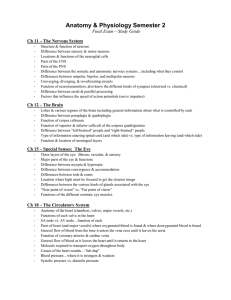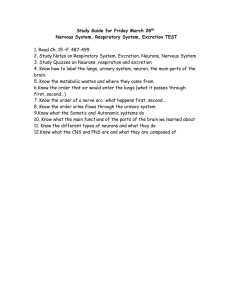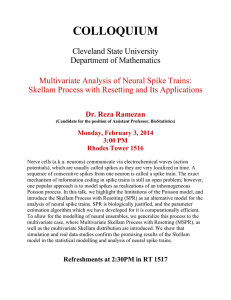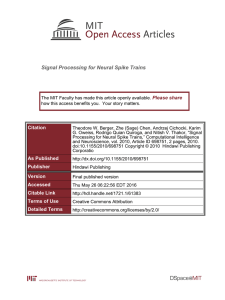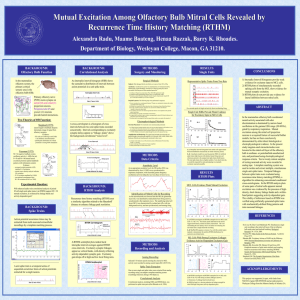Robert F. Rogers, Ph.D. Dept. of Electrical & Computer Engineering TITLE
advertisement
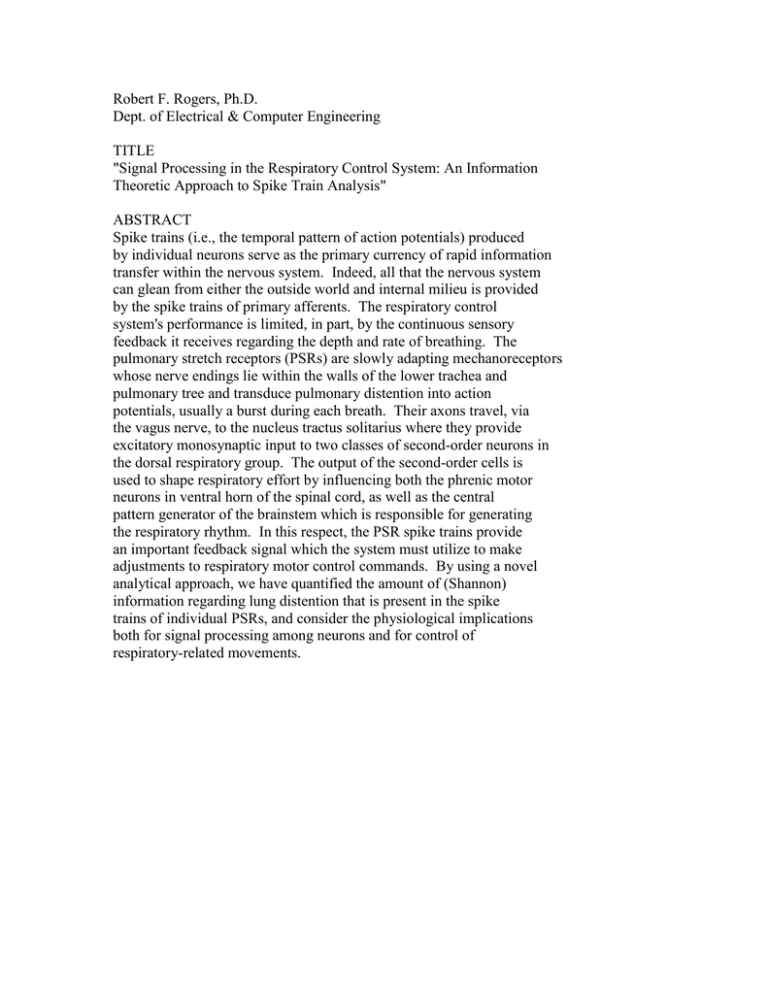
Robert F. Rogers, Ph.D. Dept. of Electrical & Computer Engineering TITLE "Signal Processing in the Respiratory Control System: An Information Theoretic Approach to Spike Train Analysis" ABSTRACT Spike trains (i.e., the temporal pattern of action potentials) produced by individual neurons serve as the primary currency of rapid information transfer within the nervous system. Indeed, all that the nervous system can glean from either the outside world and internal milieu is provided by the spike trains of primary afferents. The respiratory control system's performance is limited, in part, by the continuous sensory feedback it receives regarding the depth and rate of breathing. The pulmonary stretch receptors (PSRs) are slowly adapting mechanoreceptors whose nerve endings lie within the walls of the lower trachea and pulmonary tree and transduce pulmonary distention into action potentials, usually a burst during each breath. Their axons travel, via the vagus nerve, to the nucleus tractus solitarius where they provide excitatory monosynaptic input to two classes of second-order neurons in the dorsal respiratory group. The output of the second-order cells is used to shape respiratory effort by influencing both the phrenic motor neurons in ventral horn of the spinal cord, as well as the central pattern generator of the brainstem which is responsible for generating the respiratory rhythm. In this respect, the PSR spike trains provide an important feedback signal which the system must utilize to make adjustments to respiratory motor control commands. By using a novel analytical approach, we have quantified the amount of (Shannon) information regarding lung distention that is present in the spike trains of individual PSRs, and consider the physiological implications both for signal processing among neurons and for control of respiratory-related movements.
